Customer relationship management (CRM) software and customer retention go hand in hand. This is because CRM systems have the ability to produce actionable data to help businesses understand their customers’ behavior better—allowing them to provide more personalized services. It also enables them to gather customer feedback through service features that allow them to constantly identify and work on areas for improvement.
Here are the top three strategies to increase customer retention and earn customer loyalty made more effective using CRM software:
1. Actively Listen to Your Customers
An easy way to improve customer retention is by listening to your customers. Regularly solicit their input, then use this feedback to personalize and improve your products and services. The best way to do this is to conduct customer satisfaction surveys. Luckily, while there are plenty of survey tools in the market, your CRM can be also be used to design and deploy these surveys, which can save you from having to maintain a separate service.
HubSpot CRM, for example, allows users to create surveys within the CRM system and send them to one or many customers stored in your CRM database. Survey deployment can be automated with triggers such as purchasing a specific product or the amount a customer recently spent.
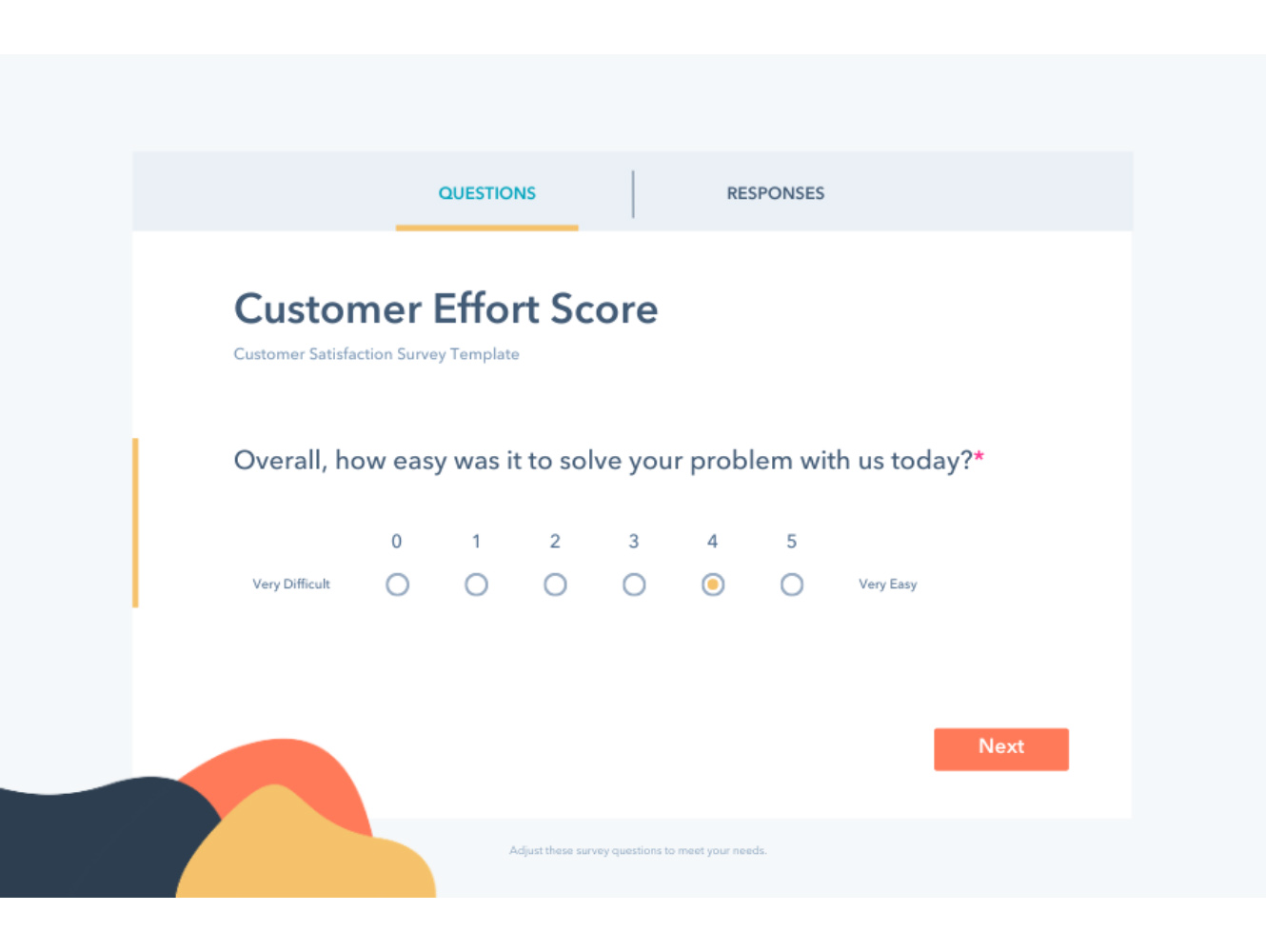
Satisfaction surveys can be automated after each case resolution.
(Source: HubSpot)
One of the most effective CRM retention strategies is to actively listen to your customers and see what they are saying about, or directly to, your business on social media. Zoho CRM makes this possible with the Zoho Social tool that businesses can use with their CRM to post content, monitor posts, and send direct messages on their social media platforms.
It is also important to monitor social media activity for retention because understanding how your customers feel about your products and services helps you identify areas for improvement. Furthermore, people now expect brands to keep customers engaged on social media, and not doing so can have a negative impact on your business. In fact, customer churn rate can increase by up to 15% if businesses fail to respond to customers on social media.
Did you know?
Using the preferred contact method of the customer is also a huge factor in connecting with a business. In fact, 40% of consumers cited “multiple options for communicating” as an important feature of a company’s customer service, ultimately contributing to positive sentiments toward a business.
Additionally, relevant insights gathered through surveying, social media monitoring, and ticket feeds should be used to enhance the customer experience and improve customer retention. For instance, customer feedback can reveal ways to improve a product or service, streamline customer support, or address some other pain points in the customer journey.
Actively listening to your customers enables you to personalize and improve their user experience. By personalizing a customer experience, your business is showing that you are listening and are willing to offer value for things that the specific customer would benefit from. A common way this is done is by targeting offers based on individual customer behaviors.
BigCommerce, through its integration with Ometria, has the capability to monitor customer category affinities, or products that the customer frequently views. Your business can use this information to send personalized promotional offers.
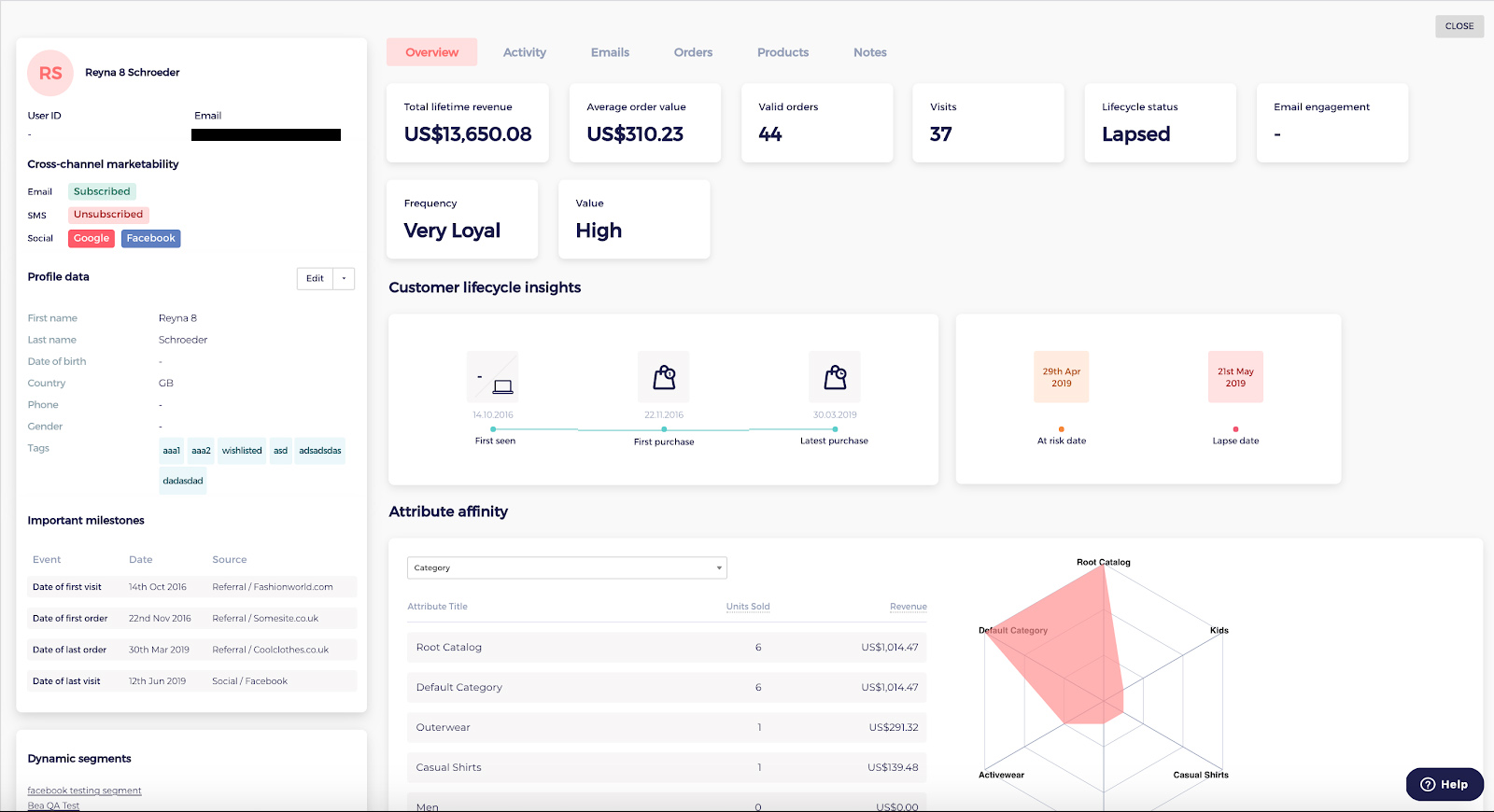
Users can see the total purchasing profile of a customer and be able to personalize offers to them.
(Source: Ometria)
2. Be Proactive by Leveraging CRM Data
Customers stick with businesses that anticipate their needs. The customer data your CRM collects helps you to be more proactive, which then enhances the customer experience. Real-time data can tell a story about things like where your customers are coming from, what they are buying, and how long their sales cycles take, and descriptive information such as the job title or industry of a lead can help you provide an overall better customer service experience.
Once you start seeing patterns in data trends, that information can also be used to predict future demand, improve inventory management, and optimize hiring to have more service reps available for customers and during certain time periods. Artificial intelligence (AI) tools within CRMs can help businesses see and analyze trends. Zoho CRM, for example, finds trends and provides them to the user when they ask Zia, their AI assistant, questions.
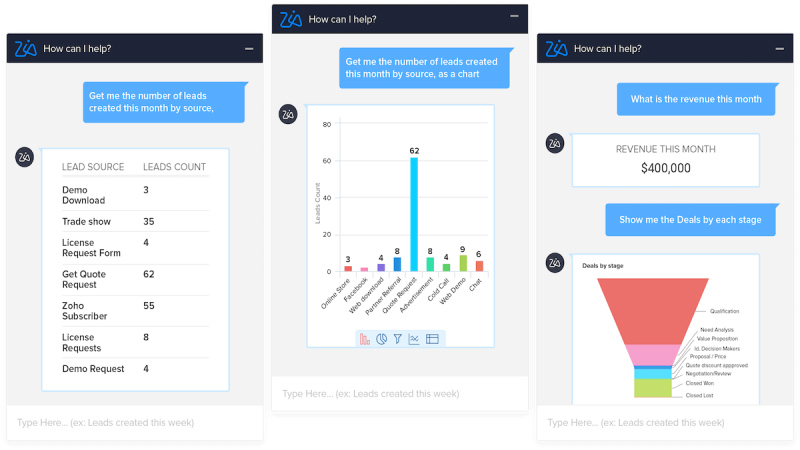
Zoho CRM’s Zia is able to pull out customer-related information to help users understand their data better.
(Source: Zoho CRM)
Salesforce is one of the most popular CRMs available for data reporting and analytics. It provides information on current sales opportunities as well as other client information such as payments, service tickets, and communication history. For example, the Salesforce billing reports dashboard shows how customers are paying and the reasons for unsuccessful payment transactions.
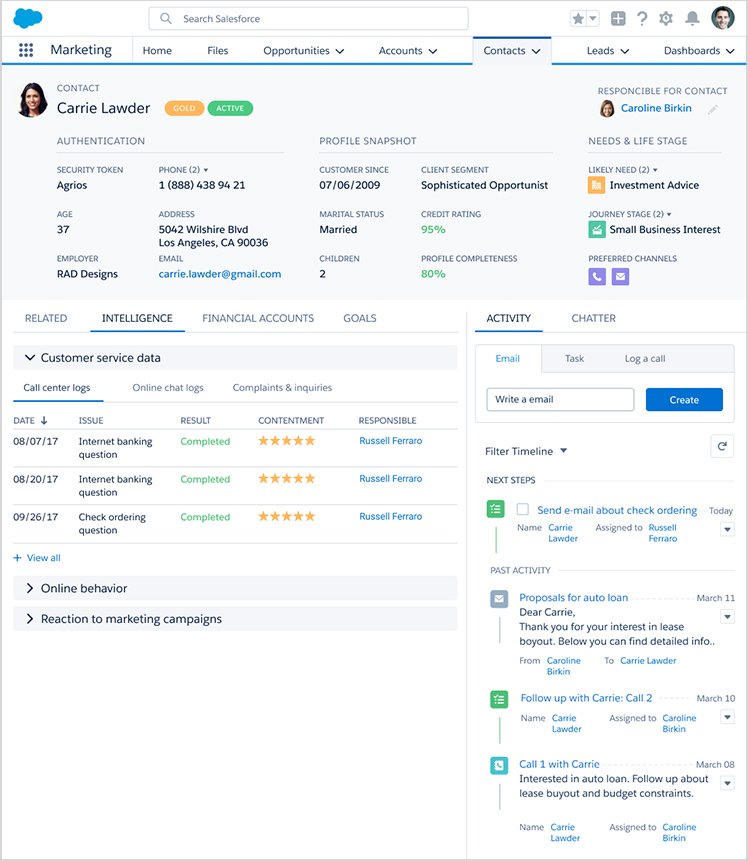
Salesforce provides a complete customer profile that can help users spot trends.
(Source: Salesforce)
Your CRM data may indicate that a high majority of your customers prefer to pay using a specific payment method. Knowing this, you can then invest in solutions to upgrade their payment portals to make the customer’s payment experience a better one. After all, 90% of consumers say immediate response is an important element of a solid customer experience.
CRM data can be used to ensure high customer service and to optimize sales decisions, such as which lead sources to invest more resources into and which leads should be assigned to specific sales reps. For more information on how to use data in your CRM, check out our article on the types of data that you should have in your CRM.
3. Be Consistent With Your Customer Engagement
Another useful CRM retention strategy is to engage customers on a consistent basis and constantly communicate with them about things that might interest them. These include upcoming promotional events and new products or services, and checking in with them to make sure they are happy with what your business is offering.
A CRM is a great tool to stay in touch with existing customers for several reasons. Your CRM can integrate with email systems like Gmail and Outlook to easily send emails to customers, which is found to be 56% more effective for retention than any other communication method. CRMs also can integrate with applications like Mailchimp to design and deploy promotional emails on an automated basis.
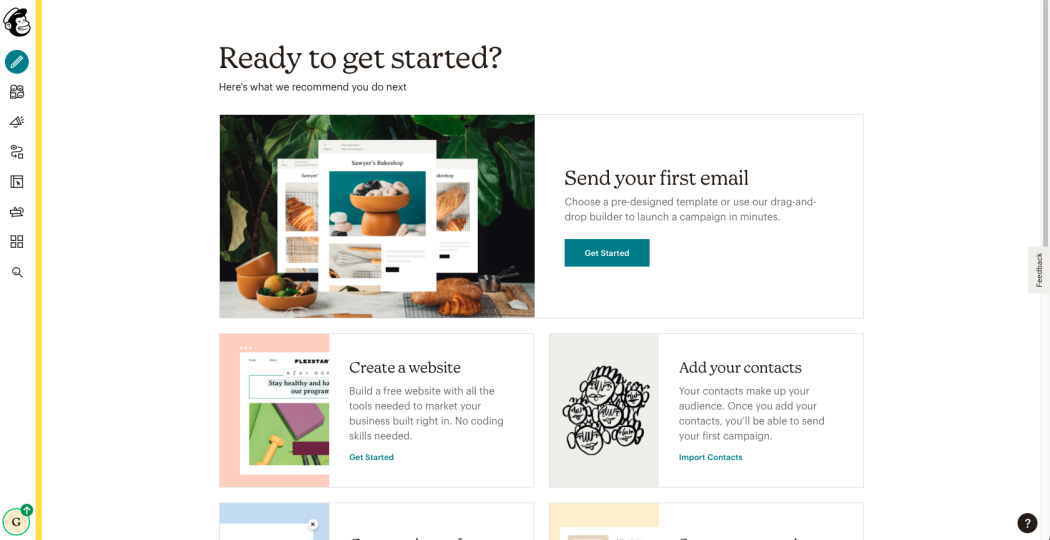
Mailchimp offers a wide range of email templates that businesses can use to send promotional emails.
(Source: Mailchimp)

HubSpot has a drag-and-drop email builder that makes it easy for users to create professional-looking emails.
(Source: HubSpot)
Another way to use CRM as a customer retention tool is to use its built-in design templates. Some CRMs, such as HubSpot, have newsletter designer features within their CRM that help design and send company newsletters to current customers, keeping them informed of company updates.
Sending frequent newsletters to customers shows them how valuable they are as it can update them on developments within your company. This provides a more emotional connection between your existing customers and your business, creating a better chance at their retention.
One benefit of constantly staying in touch with existing customers is that it allows you to be proactive in retaining them. If your business only communicates with customers when it’s time for their renewal or to make a repeat purchase, they may shop elsewhere for their products and services. In fact, when companies have a history of transparency and proactive communication, nine out of 10 customers are likely to give them a second chance even after a bad experience.
In addition, leveraging CRM and customer loyalty can be a way to positively engage your customers. Rewarding loyalty shows that your company acknowledges and appreciates customers’ loyalty to a brand. In fact, 30% of customers will switch providers if they feel there is no incentive for remaining loyal.
Your CRM system can be used to manage customer loyalty programs and customer history in order to see if they qualify as VIPs. CRMs can be configured to auto-send notifications to customers for where they are in loyalty points, how to use them, and what they need to do to continue being rewarded.
Why Having a CRM-powered Customer Retention Strategy Is Essential
High customer retention rates equate to consistent, recurring revenue without the high cost of acquiring new business through practices like lead purchasing or advertising. However, this benefit is often forgotten. In fact, 44% of businesses focus on customer acquisition while only 18% focus on customer retention. This wastes the opportunity to easily convince an existing customer, who is 50% more likely to try a new product or service than a new customer.
A high customer retention rate is not without its cost, but a CRM makes it easier to achieve. By using a robust CRM system, you can put many tasks related to experience management and engagement on autopilot through workflow automation capabilities, saving your business time and money.
Benefits of Using a CRM Customer Retention Strategy
Excellent customer retention empowered through proper use of a CRM system has valuable benefits both financially and to your company’s brand. It means customers are continuously purchasing from your business, increasing sales, and are satisfied to the point that they have a positive image of your company.
Here are the three main benefits of high customer retention rates:
1. Customer Retention Is Cost-effective
Retention is far more cost-effective than acquisition. Acquiring new customers entails sales, marketing, and customer onboarding costs, which can cost up to seven times more to bring in new customers compared to existing ones.
2. Customer Retention Increases Profits
Even the slightest increase in customer retention can have tremendous effects on your business’ income statements. According to HubSpot, a 5% increase in customer retention can increase company revenue by 25% to 95%.
3. Customer Retention Is a Result of Satisfaction
Remember, high customer retention means your customers are satisfied with what your business has to offer. An increase in satisfaction not only translates to retention, but can also result in a positive brand image for your business. Poor customer satisfaction can have severe retention effects, with 34% of customers saying they wouldn’t buy from a brand again after just one bad experience.
You can also learn more about how this type of software can be used to help improve your business’ operations more in-depth in our article, What Is CRM Software?
How to Measure the Success of Your Customer Retention Strategy
The easiest method to track your customer retention rate is to use the built-in analytics tool of your CRM. However, it is possible to calculate this number manually provided you have a way to record how many customers you have at the beginning and end of a designated period. Use our customer retention rate calculator below to quickly find your customer retention rate:
Learn more about how to effectively measure and track your retention rates in our in-depth article on how to calculate customer retention.
Whether you use a CRM or track your customer retention rate manually, your ultimate goal should be to increase retention rates to levels higher than industry benchmarks and competitors. Below are some customer retention rate industry averages:
- Retailers’ customer retention rates: 63%
- IT service businesses’ customer retention rates: 81%
- Professional service business customer retention rates: 84%
Industry retention benchmarks can be used as a baseline for evaluating whether or not your customer retention is at a healthy level and if it needs improvement.
Bottom Line
Customer retention is an integral part of your business strategy because your customers are instrumental in growing your business. By using CRM as one of your customer retention tools, you are able actively listen to what they have to say and enhance their experience using the data you collect. Engaging them consistently with the omnichannel communications CRMs provide is also one of the most effective ways to improve customer retention.
https://www.cupbord.com/3-strategies-to-earn-loyalty/


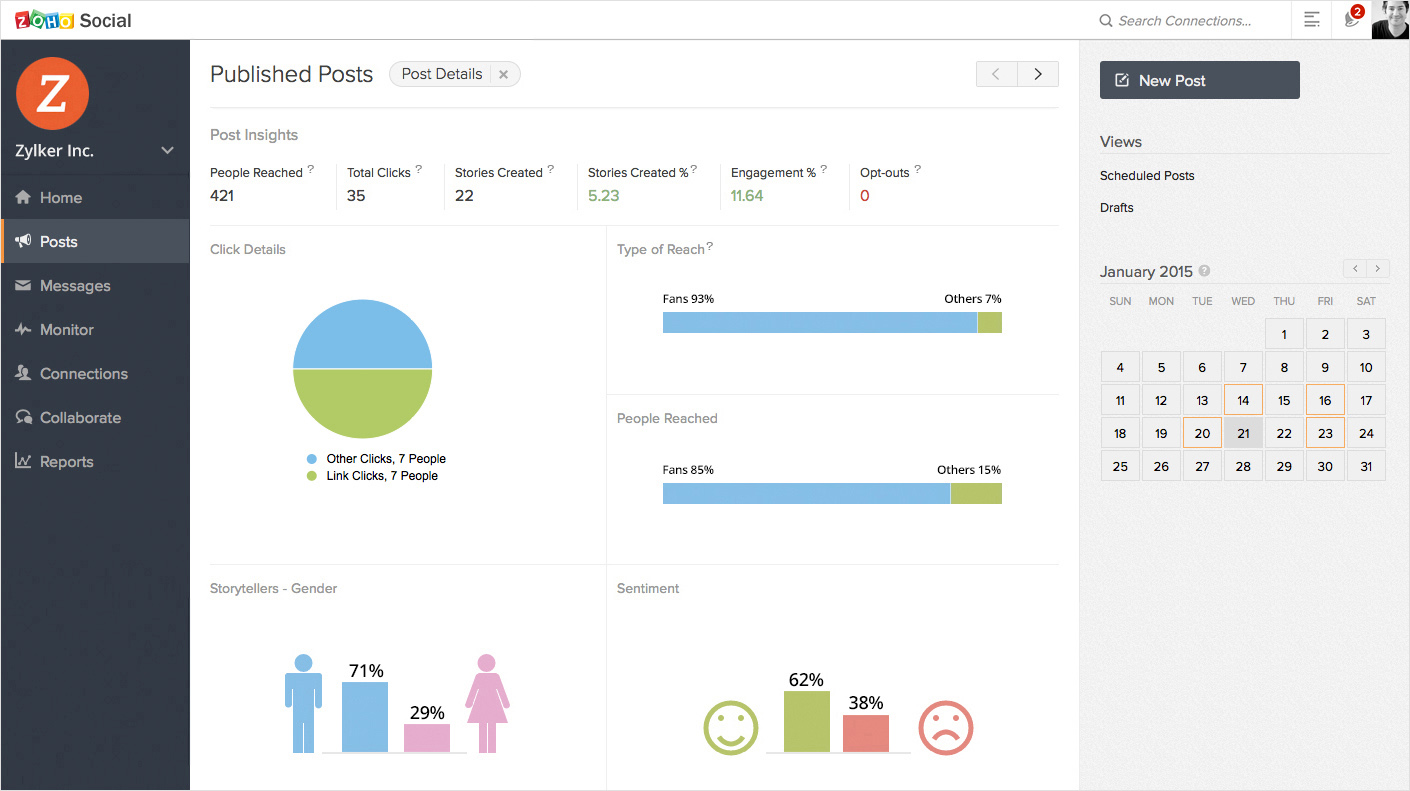








Leave a Reply